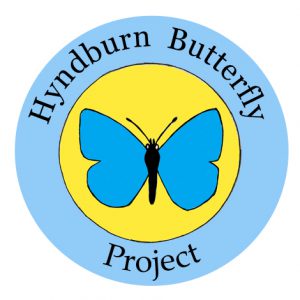The wildlife habitat at Huncoat Colliery is under threat from housing development.
Hyndburn Borough Council is holding a public consultation on the garden village plans for Huncoat, which includes proposals for a housing development on the Huncoat Colliery site. The most recent consultation closed on Sunday 13th June 2021. You can find out more about the proposals at www.huncoatgardenvillage.co.uk
The Huncoat Garden Village Masterplan and Delivery Strategy – Ecology Report (commissioned by Hyndburn Borough Council and produced by Arcadis) details the ecological surveys up until April 2019.
If you think Huncoat Colliery should be protected from development and preserved for the future, please sign this petition.
What makes Huncoat Colliery so special?
Huncoat Colliery is one of the best places in Hyndburn to see butterflies, wildflowers and other wildlife. Since the Colliery stopped operating in the 1960s, the land has been reclaimed by nature and is a haven for plants and wildlife.
22 butterfly species are present at Huncoat Colliery, 14 of which are in decline, including 2 species classed as a priority in the UK Biodiversity Action Plan (small heath and white-letter hairstreak). The following video shows the ‘near threatened’ small heath butterfly at Huncoat Colliery.
Huncoat Colliery is also home to one of the largest common blue butterfly colonies in the local area, as seen in the following video.
Butterflies are attracted to Huncoat Colliery by large areas of wildflowers, including stunning patches of wild orchids. During a 1 day survey in July 2017, 39 species of wildflowers were recorded. The first half of the following video features orchids filmed at Huncoat Colliery.
Huncoat Colliery is an accessible site which gives local people easy access to nature, as well as providing educational interest.
Sadly, Huncoat Colliery has been earmarked for development. This could be bad news for local biodiversity, as we stand to lose an area rich in wildlife at a time when it’s more important than ever to protect what we have left.
Below are a selection of photos taken at Huncoat Colliery, as well as details of our butterfly, day-flying moth and wildflower sightings.
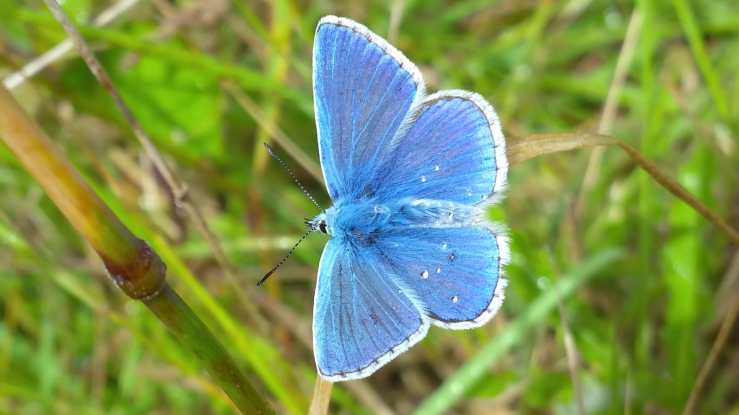
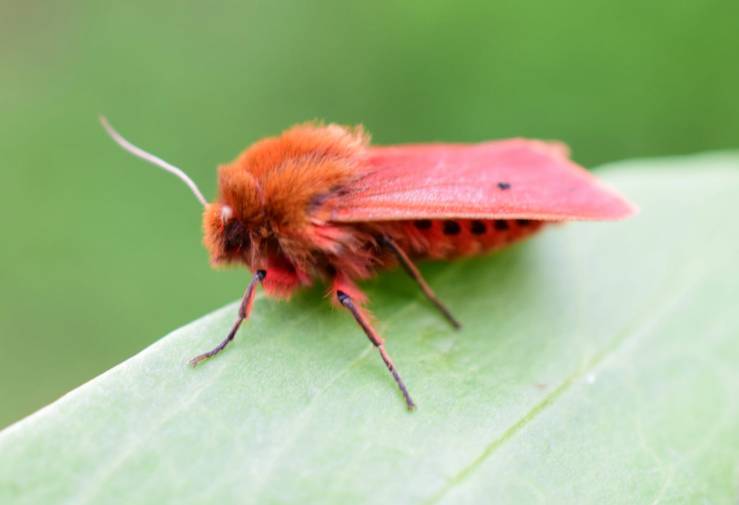
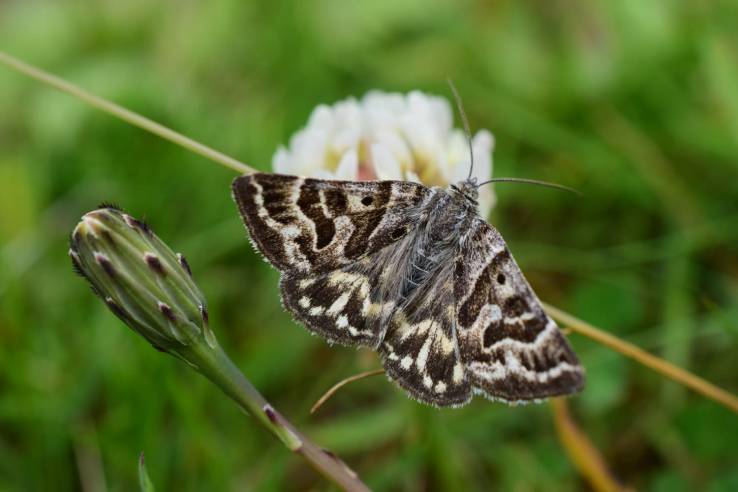
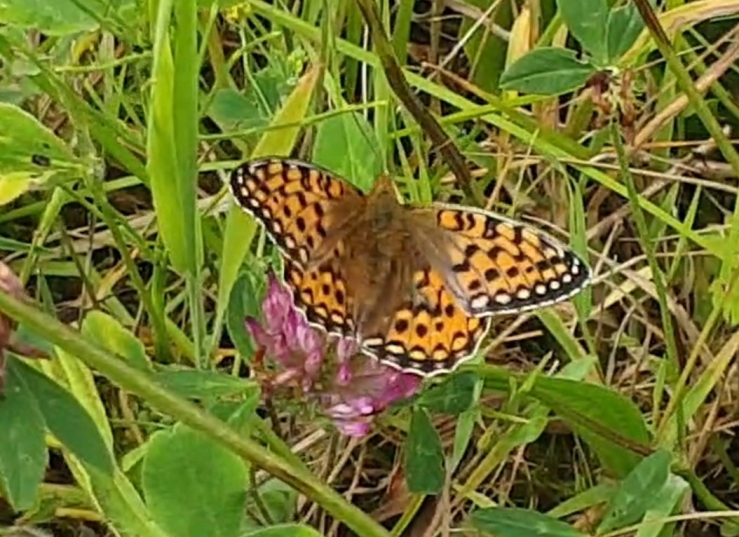
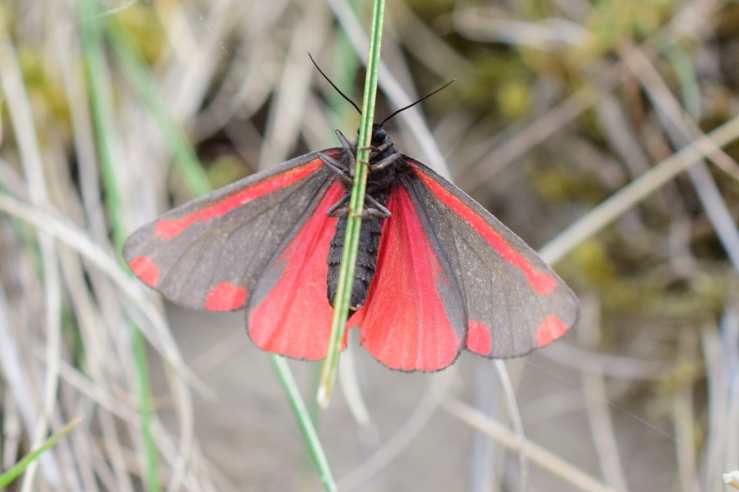
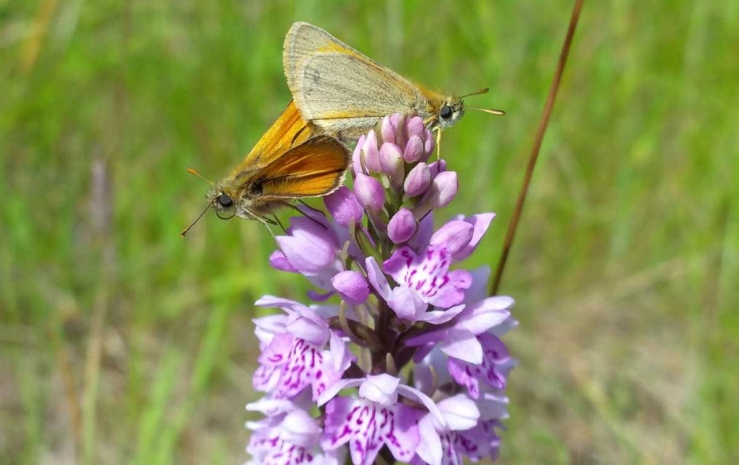

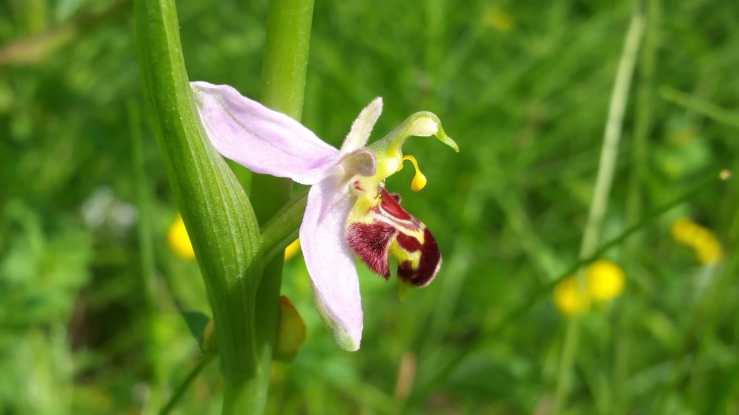
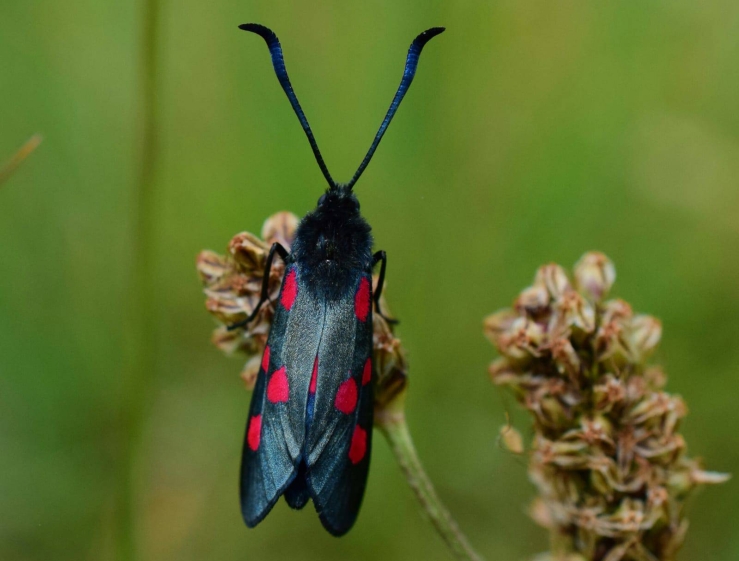

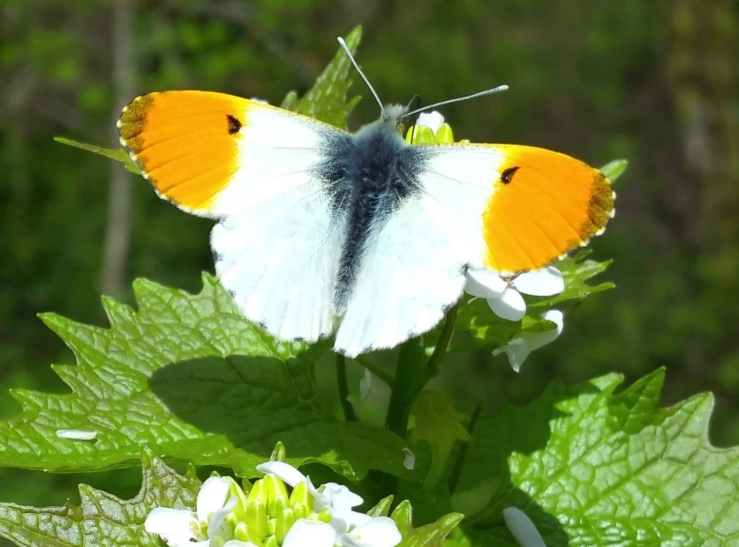


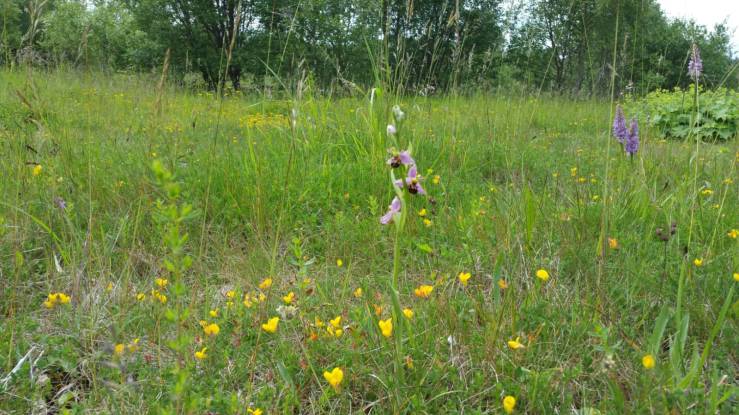
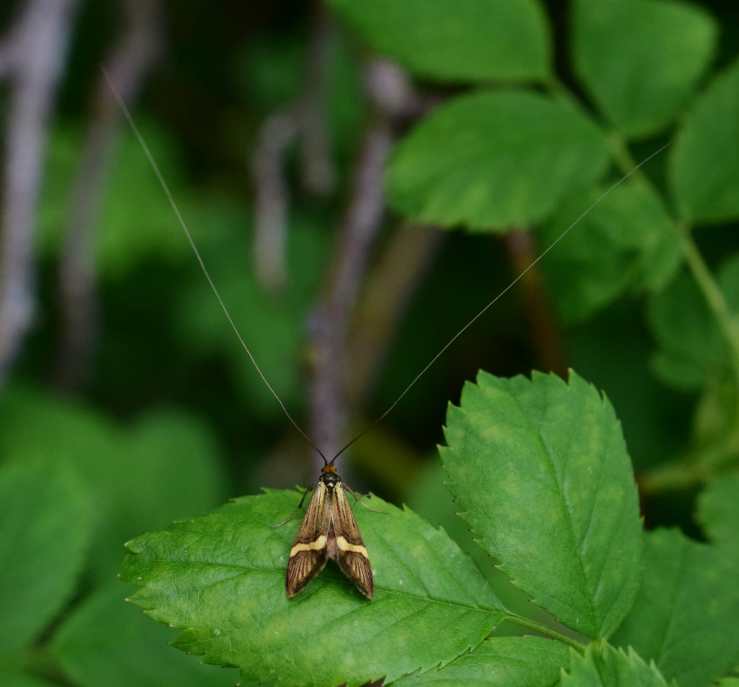
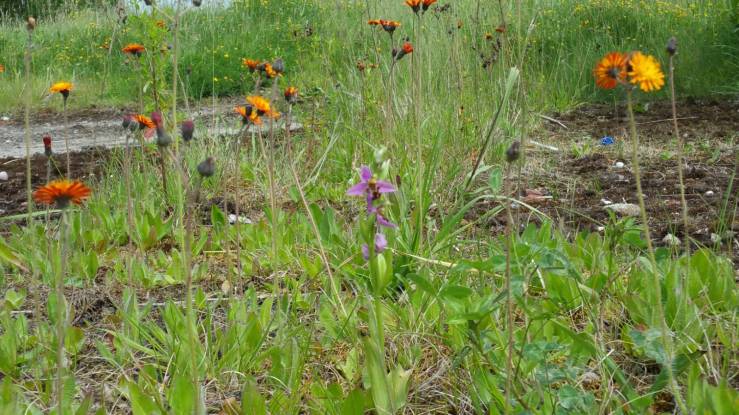

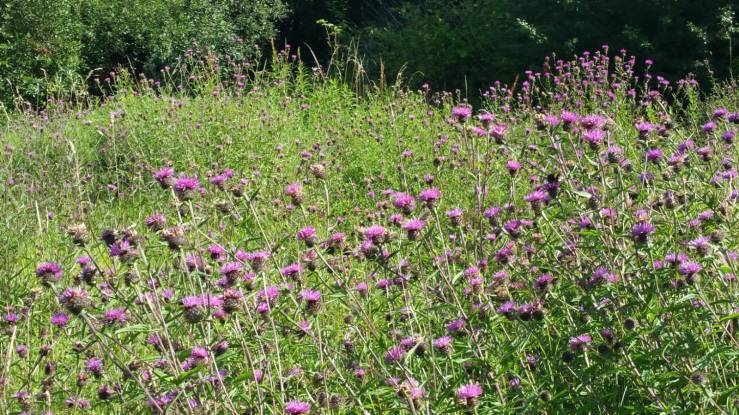
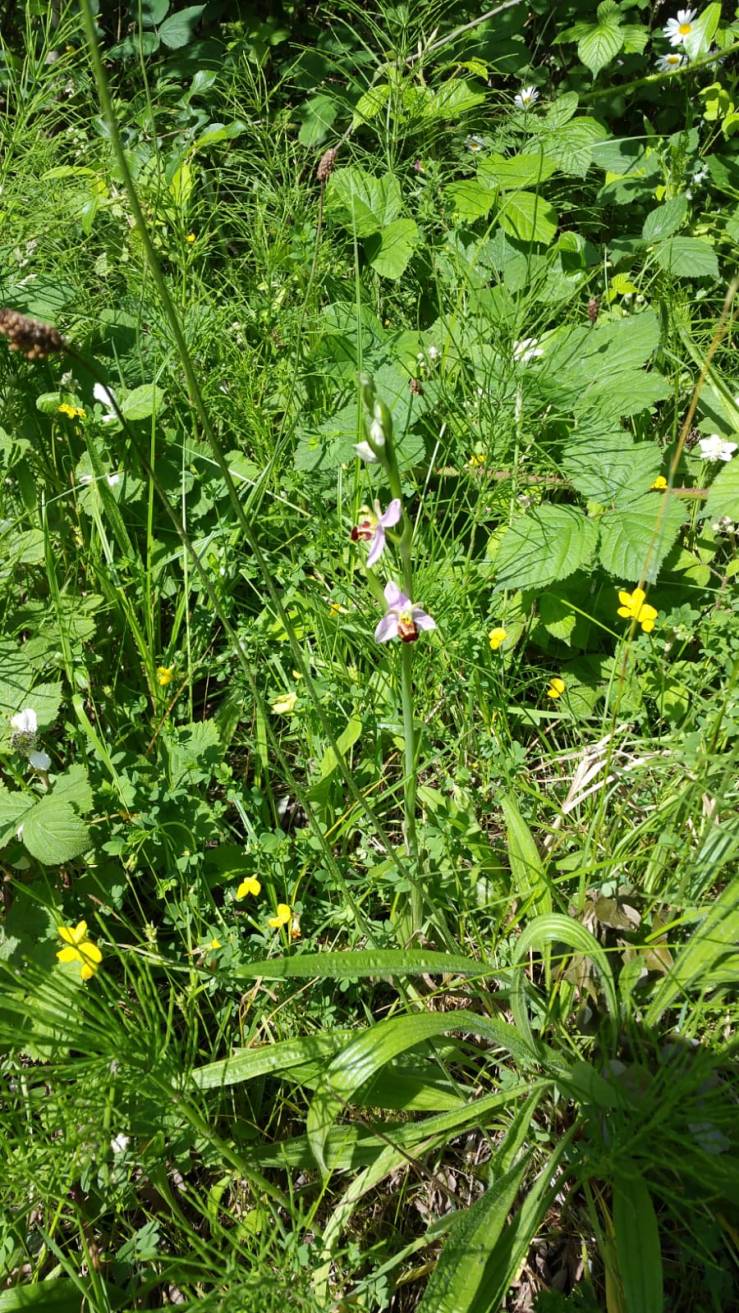
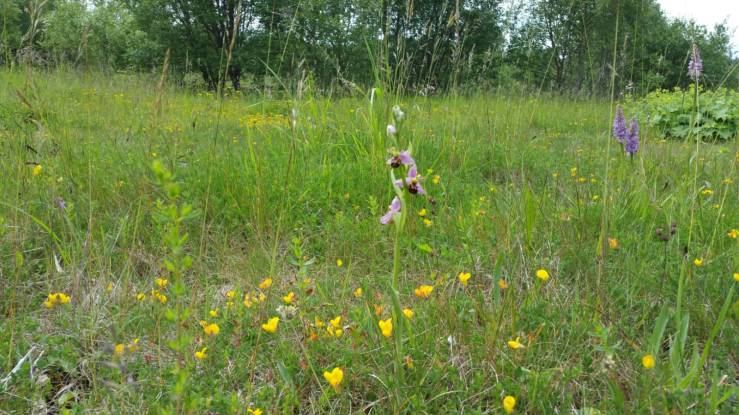
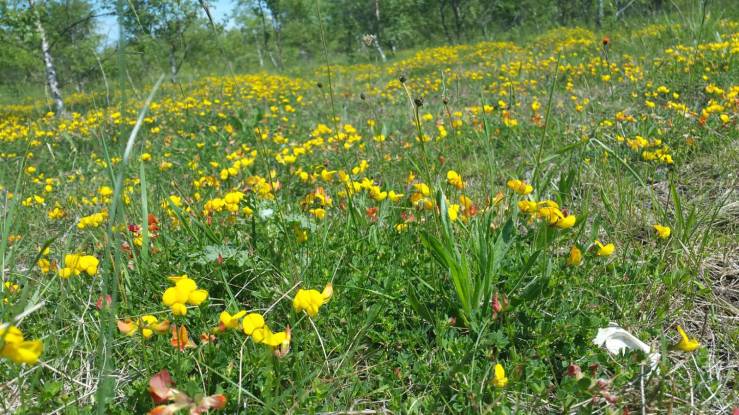
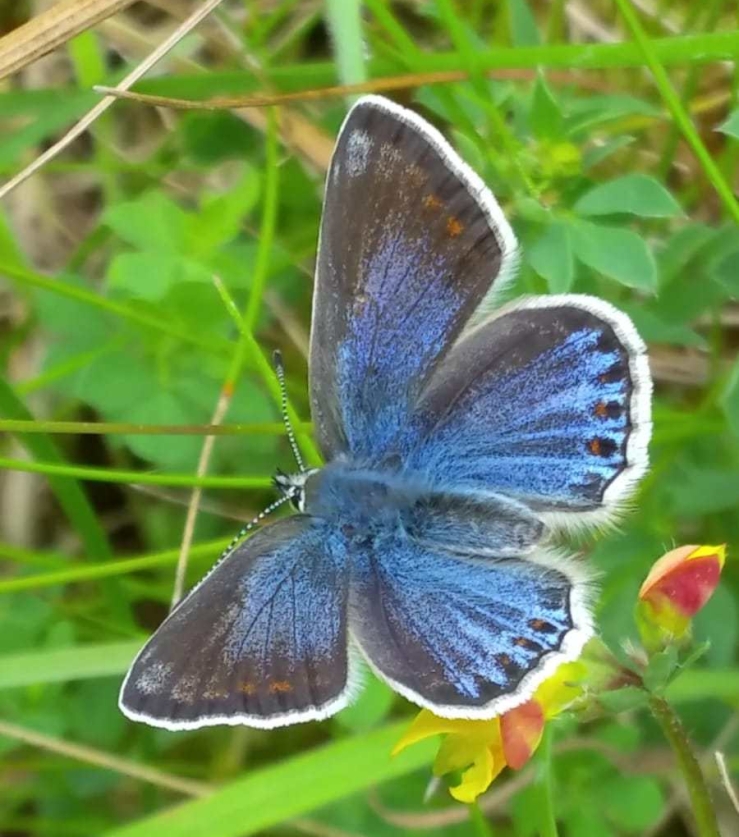
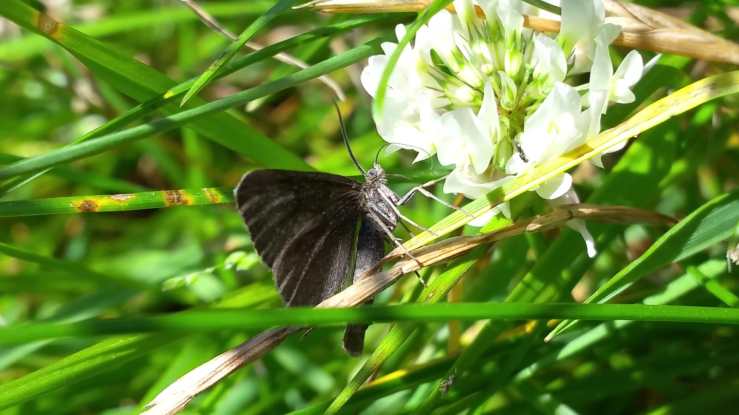
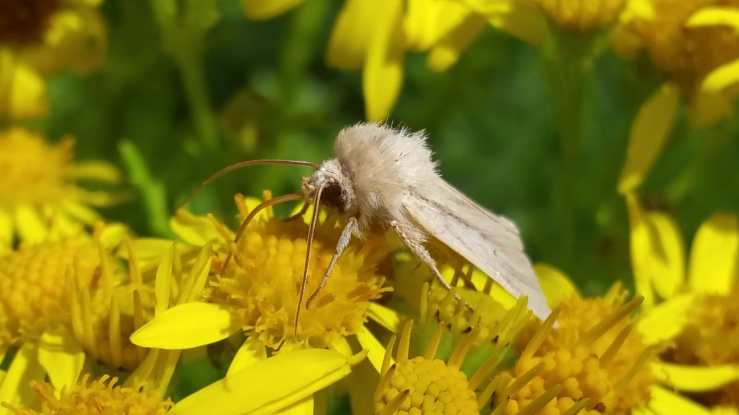
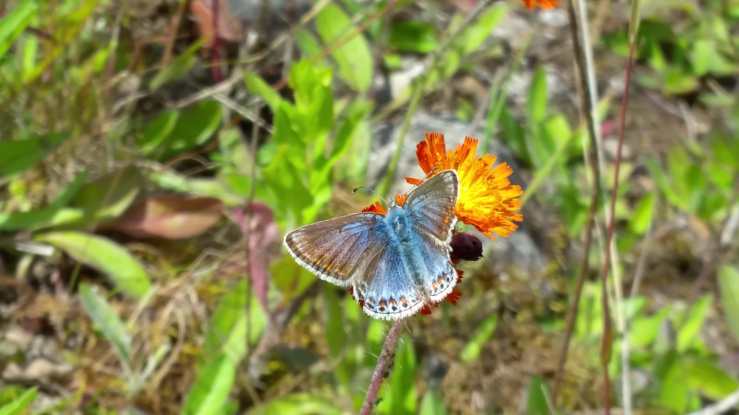
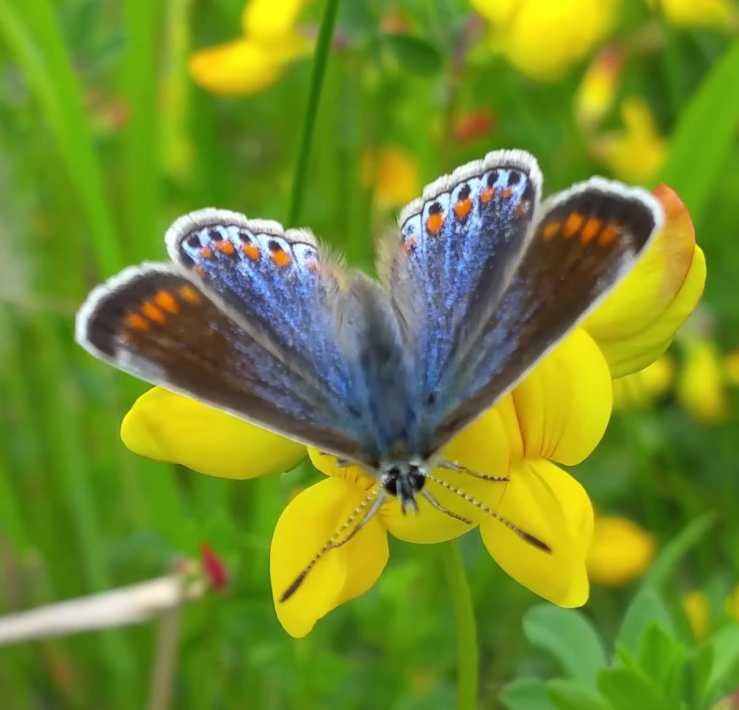

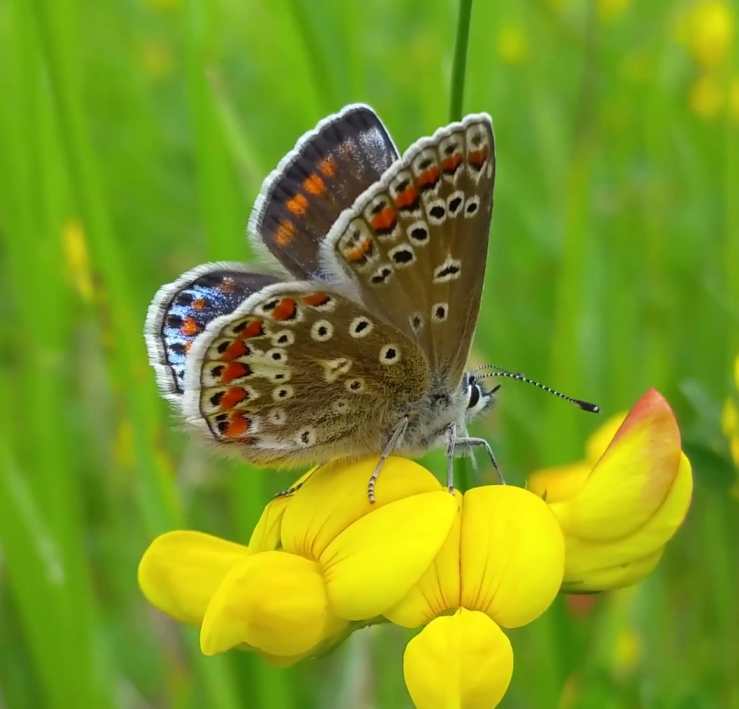


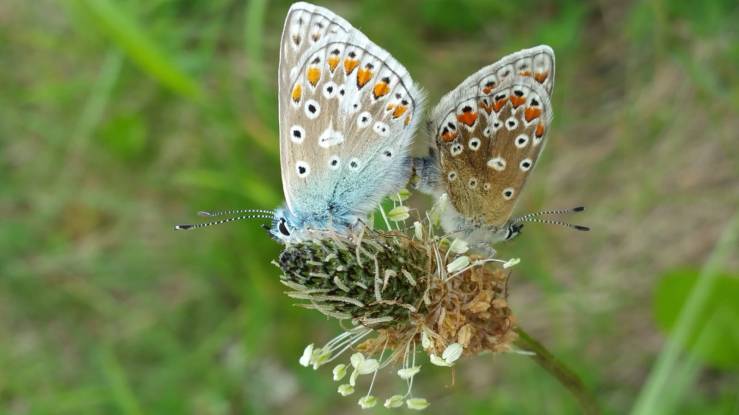
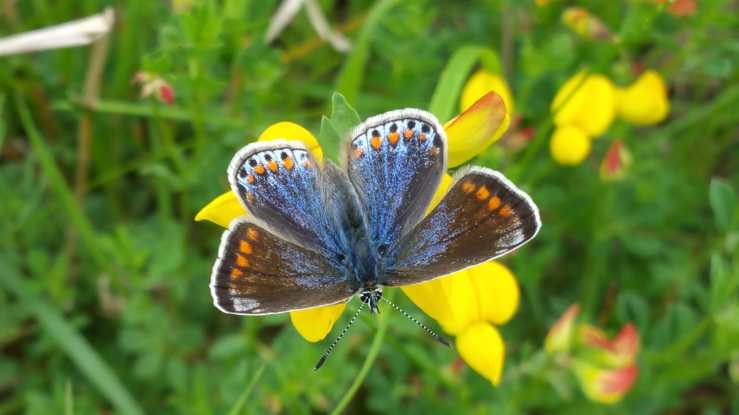
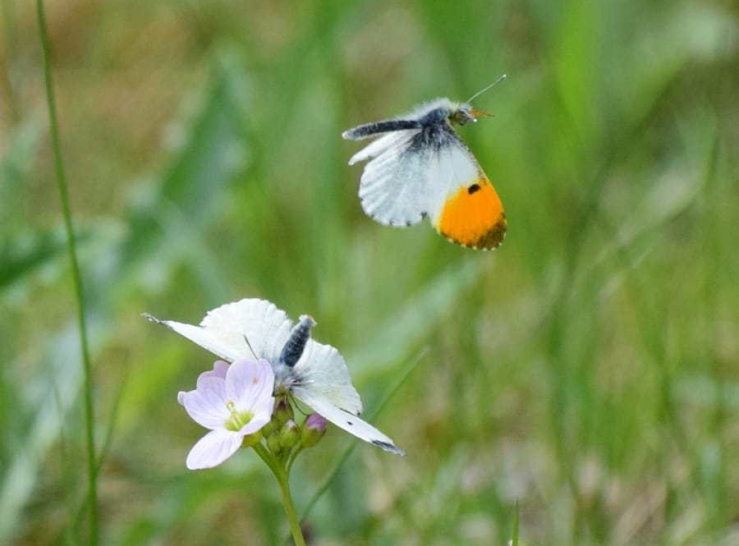
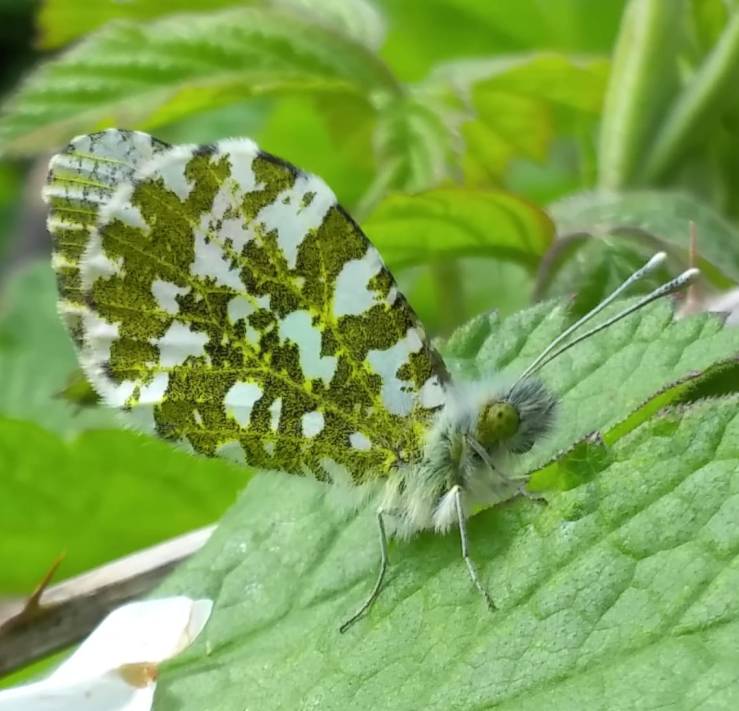
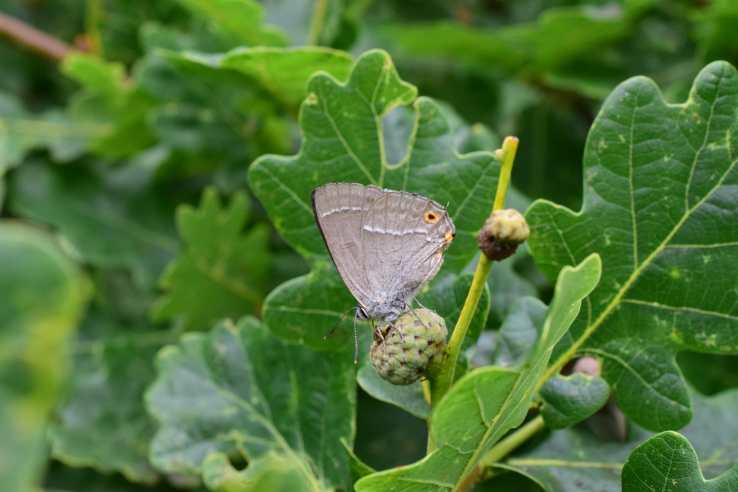
Butterflies seen at Huncoat Colliery
Brimstone (Gonepteryx rhamni)
Comma (Polygonia c-album)
Common blue (Polyommatus icarus)
Dark green fritillary (Argynnis aglaja)
Gatekeeper (Pyronia tithonus)
Green-veined white (Pieris napi)
Large skipper (Ochlodes sylvanus)
Large white (Pieris brassicae)
Meadow brown (Maniola jurtina)
Orange-tip (Anthocharis cardamines)
Painted lady (Vanessa cardui)
Peacock (Aglais io)
Purple hairstreak (Favonius quercus)
Red admiral (Vanessa atalanta)
Ringlet (Aphantopus hyperantus)
Small copper (Lycaena phlaeas)
Small heath (Coenonympha pamphilus)
Butterfly Conservation priority: high.
GB red list: near threatened.
Section 41 species of principal importance under the 2006 NERC Act in England.
UK Biodiversity Action Plan status: priority species (research only).
Small skipper (Thymelicus sylvestris)
Small tortoiseshell (Aglais urticae)
Small white (Pieris rapae)
Speckled wood (Pararge aegeria)
White-letter hairstreak (Satyrium w-album)
Butterfly Conservation priority: high.
GB red list: endangered.
Section 41 species of principal importance under the 2006 NERC Act in England.
UK Biodiversity Action Plan status: priority species.
Protected under Schedule 5 of the 1981 Wildlife and Countryside Act (for sale only).
Day-flying moths seen at Huncoat Colliery
Blackneck (Lygephila pastinum)
Burnet companion (Euclidia glyphica)
Cinnabar (Tyria jacobaeae)
Latticed heath (Chiasmia clathrata)
Mother shipton (Callistege mi)
Silver Y (Autographa gamma)
Six-spot burnet (Zygaena filipendulae)
Timothy tortrix (Aphelia paleana)
Yellow-barred longhorn (Nemophora degeerella)
Ruby tiger (Phragmatobia fuliginosa)
Chimney sweeper (Odezia atrata)
Mother shipton (Callistege mi)
Dragonflies and damselflies seen at Huncoat Colliery
Common blue damselfly (Enallagma cyathigerum)
Blue-tailed damselfly (Ischnura elegans)
Common darter (Sympetrum striolatum)
Broad-bodied chaser (Libellula depressa)
Emperor dragonfly (Anax imperator)
Brown hawker (Aeshna grandis)
Wildflowers seen at Huncoat Colliery
Bee orchid (Ophrys apifera)
Betony (Stachys officinalis)
Black medick (Medicago lupulina)
Bluebell (Hyacinthoides non-scripta)
Blue-eyed-grass (Sisyrinchium bermudiana)
Bramble (Rubus fruticosus agg.)
Broad-leaved dock (Rumex obtusifolius)
Broad-leaved helleborine (Epipactis helleborine)
Catsear (Hypochoeris radicata)
Common bird’s-foot trefoil (Lotus corniculatus)
Common blue sowthistle (Cicerbita macrophylla)
Common centaury (Centaurium erythraea)
Common hogweed (Heracleum sphondylium)
Common knapweed (Centaurea nigra)
Common mouse-ear (Cerastium fontanum)
Common nettle (Urtica dioica)
Common ragwort (Senecio jacobaea)
Common spotted orchid (Dactylorhiza fuchsii)
Common toadflax (Linaria vulgaris)
Common vetch (Vicia sativa)
Creeping thistle (Cirsium arvense)
Dotted loosestrife (Lysimachia punctata)
Dwarf mallow (Malva neglecta)
Eyebright (Euphrasia spp.)
Fox and cubs (Pilosella aurantiaca)
Grass vetchling (Lathyrus nissolia)
Great willowherb (Epilobium hirsutum)
Hedge bindweed (Calystegia sepium)
Herb robert (Geranium robertianum)
Hop trefoil (Trifolium campestre)
Marsh thistle (Cirsium palustre)
Marsh woundwort (Stachys palustris)
Meadow buttercup (Ranunculus acris)
Meadow cranesbill (Geranium pratense)
Oxeye daisy (Leucanthemum vulgare)
Perforate St John’s-wort (Hypericum maculatum)
Red bartsia (Odontites vernus)
Red campion (Silene dioica)
Red clover (Trifolium pratense)
Red valerian (Centranthus ruber)
Ribwort plantain (Plantago lanceolata)
Rose cultivar (Rosa spp.)
Rosebay willowherb (Chamerion angustifolium)
Round-leaved wintergreen (Pyrola rotundifolia)
Selfheal (Prunella vulgaris)
Soft lady’s mantle (Alchemilla mollis)
Spear thistle (Cirsium vulgare)
Tall melilot (Melilotus altissimus)
Tufted vetch (Vicia cracca)
Water forget-me-not (Myosotis scorpioides)
White clover (Trifolium repens)
Wild marjoram (Origanum vulgare)
Wild teasel (Dipsacus fullonum)
Yellow flag iris (Iris pseudacorus)
Yellow loosestrife (Lysimachia vulgaris)

